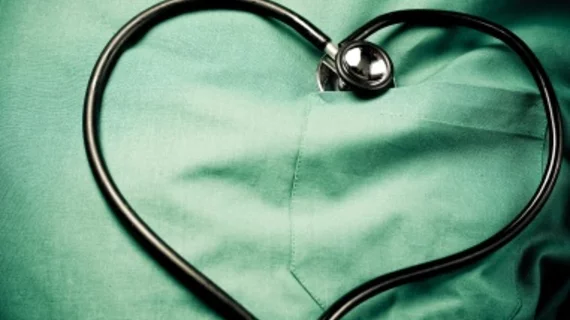Intra-aortic balloon pumps most successful within hour of cardiogenic shock
Patients who present to the hospital with cardiogenic shock (CS) and are treated with an intra-aortic balloon pump (IABP) are more likely to survive if the device is implanted within an hour of CS onset, according to research published in the American Journal of Cardiology Dec. 4.
“Intra-aortic balloon pump is commonly used for supporting patients with CS,” study authors Burcu Gul, MD, and Lavanya Bellumkonda, MD, both of the Yale School of Medicine, wrote in the journal. “In addition to its favorable effects on left ventricular stroke work, cardiac index and myocardial oxygen supply demand ratio, IABP also has some technical advantages, such as ease of implantation, greater familiarity, lower cost and lower complications compared to other temporary mechanical circulatory support (TMCS) devices.”
Those TMCS devices are being investigated in the context of cardiogenic shock, the authors said, but similar data for IABPs is lacking. To add to the current paucity of information, Gul and Bellumkonda studied 193 CS patients who visited Yale New Haven Hospital between February 2013 and April 2017. All patients received IABP.
The authors assessed baseline characteristics—the study population was, on average, in their late 60s, and the majority were men—and clinical predictors of mortality in participants. Overall, 30-day mortality in the group was 36 percent.
Gul and Bellumkonda reported 30-day mortality was 24 percent in patients whose IABP was placed within an hour of CS onset, and 49 percent in patients whose devices were implanted more than an hour after recognition of CS. Mortality rates were 18 percent, 21 percent, 36 percent and 74 percent for patients requiring zero, one, two and three or more inotropes after IABP placement, respectively.
“It has been shown that escalating doses of vasopressors and inotropes are associated with increased mortality,” the pair wrote. “Earlier intervention aiming for shorter ‘door-to-support’ time with Impella (Abiomed) has shown benefit. Our study shows similar results with earlier use of IABP.”
The authors said nearly 70 percent of patients presented with CS related to an acute coronary syndrome (ACS), while the remaining 30 percent presented with CS stemming from non-ACS causes. Though one of their aims was to evaluate the role of IABP in these two distinct groups, Gul and Bellumkonda found 30-day mortality rates were similar between the two cohorts (34.3 percent for ACS-related CS and 40.7 percent for non-ACS-related CS).
Overall, older age, cardiac arrest on presentation, time to IABP implantation and the number of inotropes needed after IABP implantation predicted 30-day mortality in the study population.
“Early use of IABP in CS was associated with significant improvement in 30-day mortality, regardless of the etiology of CS,” the authors said. “Continued need for significant inotropic support after IABP is associated with worse prognosis and may be used as an indicator for need to escalate to higher levels of support.”

